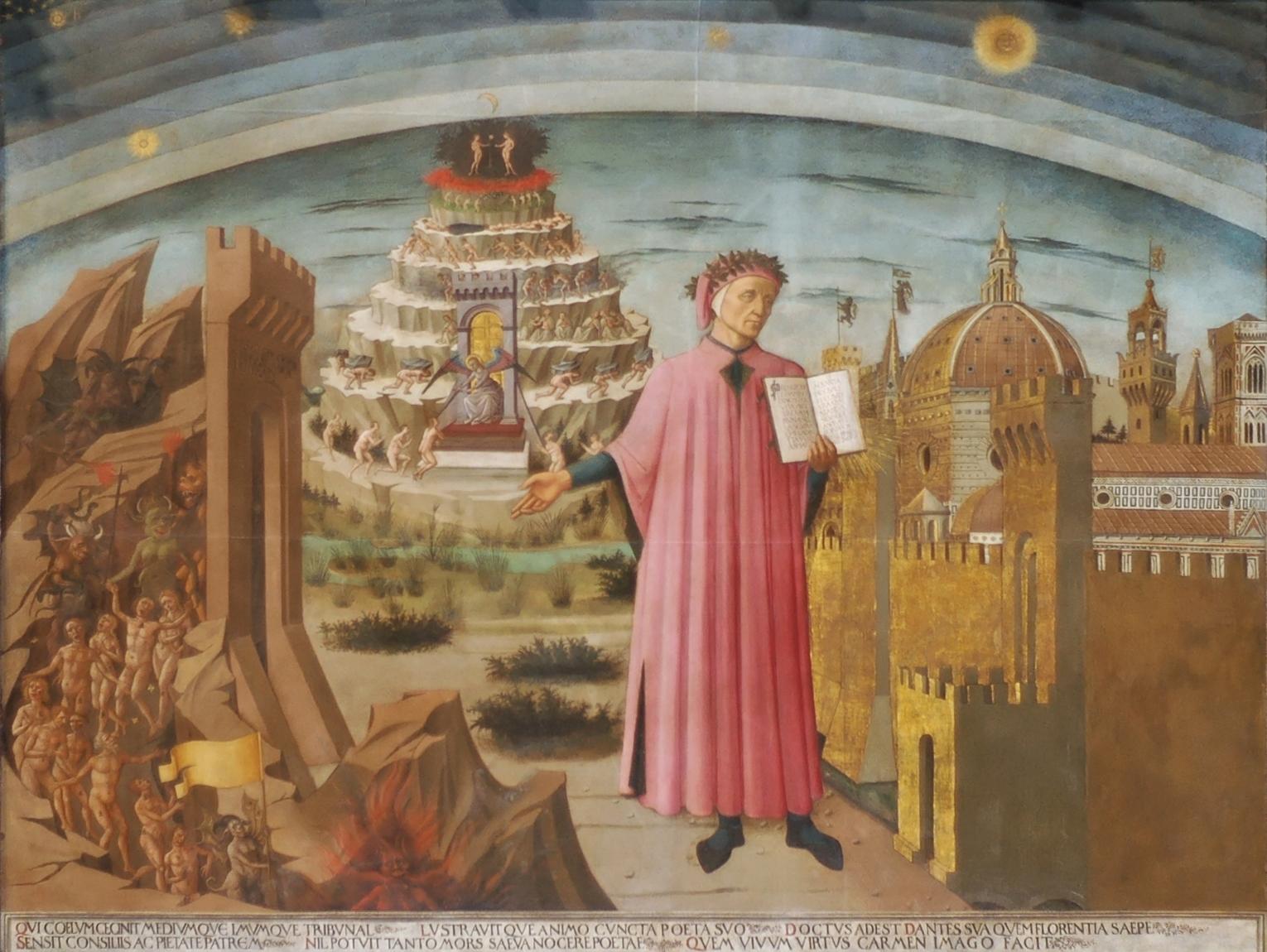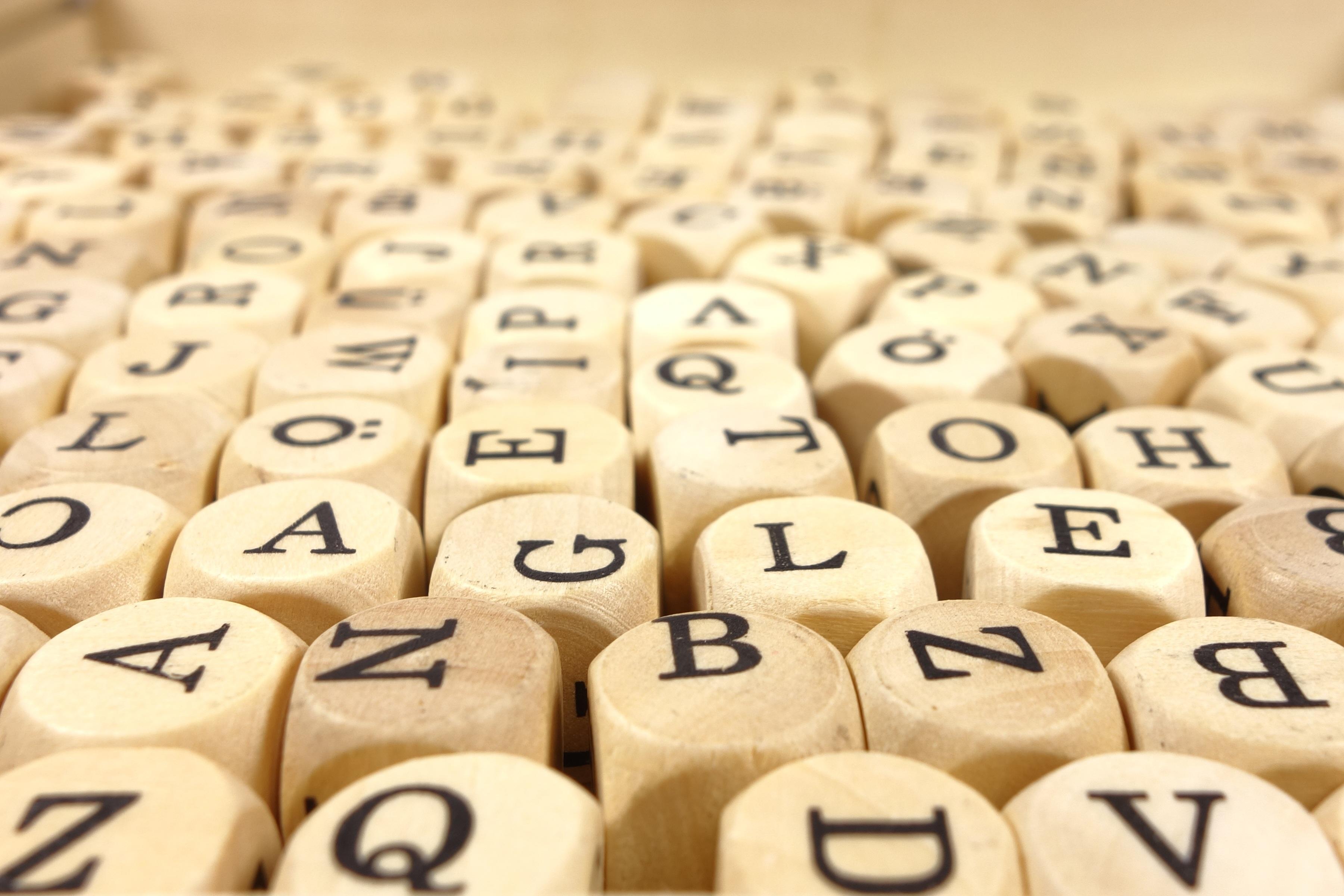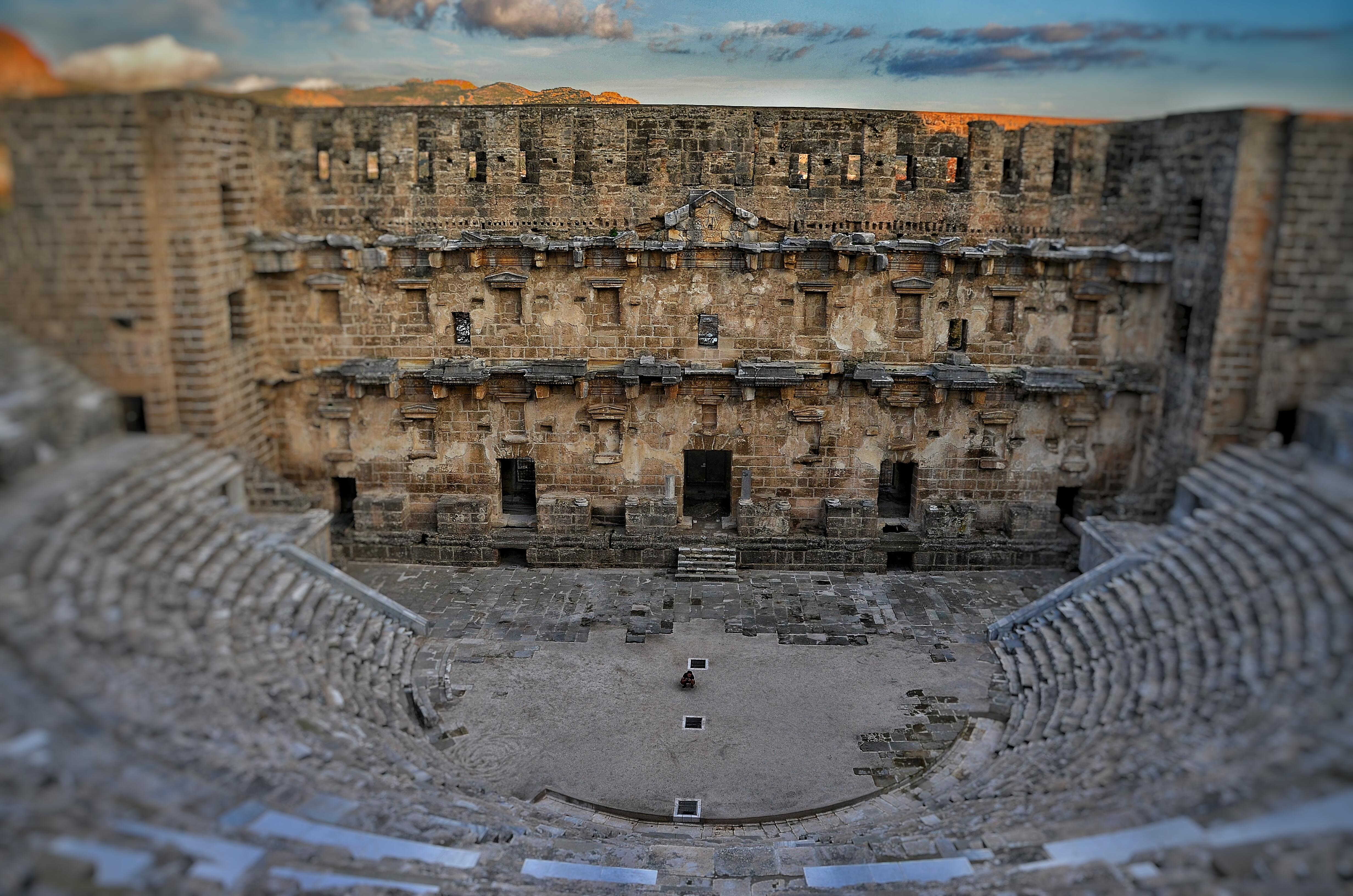Romans spoke what language? The answer is Latin. Italians are the descendants of whom? The Romans… What Language do Italians speak? Italian! So the Italian language is descended from Latin too? That’s where things become a little more complicated…
How did Latin turn into Italian over the years? Why did Latin change so much and become the Italian we know today? When did people stop speaking Latin – and why? Discover the history of learning Italian with us.
It turns out that a lot can happen over the course of 2,000 years. Hopefully, this article should have the answers you’re looking for.
Yep, the Romans did speak Latin! Latin was the official language of the Roman Empire. It started in the region of Latium (around Rome), and as the empire expanded, Latin spread across Europe, North Africa, and parts of the Middle East.
There were two main forms of Latin:
Classical Latin – used in formal writing, literature, law, and speeches.
Vulgar Latin – the everyday spoken version, used by common people and soldiers. This version evolved into the modern Romance languages like Italian, Spanish, French, Portuguese, and Romanian.

The History of Latin: The Origins of the Language
The answer to the questions: “What language does Rome speak?”, or “What language do Romans speak?”, is one that has greatly varied over time.

Latin comes from the Italic languages. The Italic languages were generally spoken in what is now Italy.
Latin was never the only language spoken in the region. In fact, the whole area was home to plenty of different peoples and languages.
Latin for Rome evolved as a tool which enabled communication throughout a great many territories and peoples. It retains its fame to this day as the ‘Language of the Roman Empire’.
So how did the ancient Roman language come about, and more curiously, how did such an influential language disappear from use?
The earliest written records of Latin existed in the 7th Century BC, which we know thanks to the discovery of archaeological artefacts bearing inscriptions.
The Italic people we’re interested in resided in the centre and the south of Italy. This region is known as ‘Latium’. This area is currently home to the Vatican.
The Italic languages, like almost every language spoken in Europe, are members of the Indo-European language family. This includes a lot of languages that have since disappeared as well as languages such as Italian, French, Portuguese, Spanish, and Romanian.
We can think of Latin as having dissipated into the cultures that it used to link together. But in a similar way, we can think of the reverse occurring with the diverse tribes and cultures in the geographical area coming together as the culture became centralised.
Before the foundation of Rome in 753 BC, we believe that the Italic languages were heavily influenced by Greek and Etruscans.
Once Rome was created, it became hugely important in spreading the Latin language around the region. Latin inherited 6 of the 8 grammatical cases from the Indo-European languages.
Including:
Classical Latin and Vulgar Latin
Classical Latin is said to have existed since the 1st century BC. Latin however, existed before this, and the term we use to refer to it is ‘Old Latin’ or ‘Early Latin’.
Old Latin: Evolution and Decline
After the foundation of Rome and its expansion, Latin began to spread across the regions it occupied.
Thanks to colonisation, it reached as far as the limits of Western Europe, Asia Minor, and North Africa.
Find and start taking Italian classes in Edinburgh.

Between 200 BC and 100 AD, Latin became the official language of the Roman Republic. It was used by the Roman administration as well as for law, politics, and religion. While it coexisted with Greek dialects, Latin quickly took over the other languages. This is due to leaders forbidding their people from speaking Greek in favour of Latin.
This was the ‘Vulgar Latin’, which was spoken by common people throughout the cultures of the Empire.
The more formalised Classical Latin which was used in legislation and literature entered its so-called ‘golden age’ from 70 BC to approximately 20 AD. This period is when the poet Virgil lived, whom you may recognise as classical Rome’s most famous poet.
While Rome was responsible for the spread of Latin, the fall of the Western Roman Empire led to its decline.
What’s the difference between Classical Latin and Vulgar Latin?
Prior to the notorious fall of the Roman Empire, the Hun traversing into Europe caused the displacement of many tribes and peoples, forcing them to vie for territory and power in corrupt and weakening territories of Rome.
In the 5th century, some Germanic mercenaries were taking control of areas of the modern Italian peninsula. The Eastern Roman Empire, also known as the Byzantine Empire, survived this cultural shift but the theme of this ‘new empire’ was undoubtedly more culturally Greek.
Despite this Latin in its former territories only declined moderately. We could say that rather than disappearing, Latin transformed when it came into contact with other languages (such as the Germanic languages).
Classical Latin can be said to have died along with the formality it used to represent, while Vulgar Latin persisted in the people who still occupied the same area and shared the same cultural tendencies.
Think about the difference between standard English - used by politicians and academics and in written texts - and the language that we actually speak: there's quite a difference.
Vulgar Latin
Vulgar Latin, without an empire holding it together, instead gave rise to a number of different languages: the Romance languages and Italian, namely.
While already in decline before the fall of the empire, Classical Latin became less important while the opposite was true for Vulgar Latin. In fact, scribes and clerks began to rewrite civil and religious documents into Vulgar Latin which would essentially replace Classical Latin for all but the very well educated elite of society.
Classical Latin (which wasn’t in use by the people) lost its lustre once the empire collapsed. However, the Romans did put the Latin alphabet into common use and nowadays is used by tons of languages all over the world.
Latin before the Renaissance
With the arrival of new peoples over the centuries, Latin transformed and evolved.
By the late 5th century, Italy was a kingdom established by the Ostrogoths. Between 568 and 774, the Lombards, another Germanic denomination, controlled the Peninsula. The Francs, under the reign of Charlemagne, came to Italy in the 8th century. We should also mention that parts of Southern Italy were controlled by both the Byzantine Empire and The Ottoman Turks at different points.
The large number of different cultures contributed to the evolution of Vular/Medieval Latin into the Italian we know today.
Throughout this period Medieval Latin was still in use, although it did not have a role as a spoken language, so much as a written language that united Christian Europe. Latin as a spoken language faded out almost entirely, being rapidly replaced by the evolving proto-romance languages.
And so, in the Middle Ages, you'd see a strange phenomenon in which, whilst nobody actually spoke the language - as they rather spoke the regional derivations of Latin - the Church and the Holy Roman Empire (Charlemagne's power) used the language in all of their official correspondence and records. In fact, Charlemagne promoted the use of the Latin language and literature in what became known as the Carolingian Renaissance.
Consequently, the 'dead' language spread into territories that never had a history of speaking Latin, such as the German states. This was due to the fact that the Holy Roman Empire over which Charlemagne ruled conquered new states - and so officials and authorities in his extended kingdom were required to follow the desires of the Emperor.
Yet, during this period, the nature of Latin was changing: Latin grammar, pronunciation, syntax, and vocabulary all changed, with different users, contact with each vernacular, and a move towards greater clarity, such as the use of the preposition.
Renaissance Latin
During the Renaissance (between the 14th and 16th centuries), we see the development of a cultural force known as Renaissance humanism.
This was a movement - in line with the Renaissance's broader project of the 'rebirth' of classical forms - that paid close attention to the study of classical antiquity. Many of those involved in the movement - such as Petrarch, Boccaccio, and Bracciolini - were collectors of antique manuscripts, and they were known for promoting classical models for the art and literature of the day.
However, the Latin that they studied and promoted was promoted in opposition to Medieval Latin: they didn't so much like contemporary Latin, with all its changes and developments compared with the 'proper' Latin spoken by the ancient Romans. For example, they looked to writers such as Cicero and Virgil as their models.
The importance of this movement cannot be overstated - as, all across Europe, Latin came to be taught in the humanist style. You find people like Shakespeare and Christopher Marlowe having to learn the Latin of Virgil in London.
This language came to be known as Renaissance Latin - and, whilst it was never spoken by the people as such, this language was written by diplomats, artists, politicians, and philosophers throughout the period.

The Birth of Italian
We know at some point that the Italian language we know today took over from written and spoken Latin.
Placiti Cassinesi
The earliest documents we have of written Italian come from the late tenth century - and they are rather prosaic. They are legal documents regarding a dispute between some monasteries and a landowner about fifty miles south of Rome.
Rather than in Latin - in which most other legal documents were still being written at this time - these texts, known as the Placiti Cassinesi, are written in a vernacular. They show a distinct difference from Latin, moving away from Latin grammar and with different spellings and syntax and new words. The dialect in which they are written developed straight out of the vulgar Latin we discussed above.
The Renaissance and Italian Vernacular
We can point to the Renaissance and Florentine writers such as Dante, Boccaccio, and Petrarch as a significant turning point in the death of Latin as the language of culture in Europe.
Whilst these writers promoted classical culture and Latin as models and benchmarks of literary quality – and although they wrote in Latin too – these writers were also the first to compose poetry in the vernacular, meaning in the local language.
Check out various Italian classes in Edinburgh here on Superprof.

Dante's The Divine Comedy
Thanks to his work The Divine Comedy, Dante is one of Italian’s forefathers. The Florentine writer wanted to be understood by everyone and not just by the elite – and this work was one of the first poems ever to be written in something called Italian.
Who wrote in Florentine, a sub-dialect of the Tuscan dialect, and borrowed words from Latin, French, Lombard, and Provençal. His goal was to show that everyday language was as noble as Latin – and his work De vulgari eloquentia (ironically, a defence of the value of the vernacular written in Latin) explained his decision.
His gamble paid off, since a number of other poets followed in his footsteps—including Petrarch. And inspired by this vernacular poetry, writers across Europe moved away from Latin too: Geoffrey Chaucer and John Gower as examples.
The First Italian Dictionary
However, 'Italian' as such was still far from existing at this point. Dante was writing in a dialect—in a peninsula in which there were nearly a thousand such dialects.
It wasn't until 1612 that the first Italian dictionary was published, by an institution in Rome called the Academia della Crusca. Their Vocabolario degli Accademici della Crusca, one of the first dictionaries in the world, was an attempt to formalise the Florentine dialect (the language in which Dante was writing) and this became the basis for standard Italian subsequently.
As Florence was such an important city state from the time of Dante into the seventeenth century, it was this Tuscan dialect that proved most influential in the development of the Italian language. Even today, Italian is based on this dialect—much as 'standard' English is based on the dialect spoken around London from the time of Chaucer.
Modern Italian
By 1861, when Italy was finally unified as a country, only 2.5% of the population could speak Italian. Everyone still spoke regional dialects.
As the country entered into political union, 'Italian' became the language of the state—and so the common language of the people in the peninsula.
It is thought that Alessandro Manzoni's novel The Betrothed, published in 1827, set the basis for modern Italian.
Tempted to type Italian classes near me in google? Save time and head straight to Superprof to connect with local tutors now.
Did Latin Ever Really Die?
The answer to this question is yes and no—and it is very hard to identify a precise moment at which it died definitively. Scholars make the helpful distinction between extinct languages—which no-one speaks—and dead ones, which no longer has a native community that speaks it. In this sense, Latin is a dead language, but it has been dead for a very long time.
Rather, the history of Latin is one of change: the populations speaking the language changed, Latin pronunciation and grammar changed, and it was heavily manipulated and reformed by the whims of different intellectual currents throughout history.
The Language was also formative and foundational to other European languages, and with a quick example we can demonstrate this.
Take the word urban, which we know to mean ‘in relation to/of a city’. This word actually comes from the Latin ‘urbs’ which literally means ‘the city’.
But Latin, clearly, never became extinct—not in the same way as languages like Etruscan or Phoenician, for example. Rather, it remained as a language—at least, as a language that is studied and recognised—due to European culture's continued respect, not to say adoration, for the classical culture of ancient Rome.
Throughout history, cultural movements and political powers strove to legitimise their own cultures and authority by appealing to the memory of ancient Rome. So, the Holy Roman Empire chose its name to hark back to that ancient culture—and there is no surprise that it was Charlemagne who had such an effect on the revival of the language.
Similarly, figures during the Renaissance in Italy sought to give their artistic works a greater authority by returning to the models of ancient culture—and this in turn returned Latin to the centre of artistic production.
This concern for ancient Rome continued long after this—with Roman architecture being the inspiration for cities such as Edinburgh long into the nineteenth century. With such an attention to the culture of the ancients, Latin is very unlikely ever to go fully extinct.
You could also look at the history of Hebrew, a language that was successfully brought back from the dead when the state of Israel adopted it as its official language.
Examples of Italian Words Similar to Latin
Latin still has a huge influence on Italian vocabulary.
To prove our point, we’ve put together a list of a few Latin terms and their almost-identical Italian counterparts.
Here’s a non-exhaustive list, with the Italian listed first, followed by its Latin root and English translations:
| Italian | Latin | English |
|---|---|---|
| Accelerare | Accelerare | Accelerate |
| Biblioteca | Bibliotheca | Library |
| Calamità | Calamitas | Calamity/Disaster |
| Diploma | Diploma | Diploma |
| Enciclopedia | Enciclopedia | Encyclopaedia |
| Fondamentale | Fundamentalis | Fundamental |
| Gladiatore | Gladiator | Gladiator |
| Indeterminato | Indeterminatus | Undetermined |
| Lacrima | Lacrima | Tear |
| Maggiordomo | Major domus | Butler |
| Negoziatore | Negotiator | Negotiator |
| Occasionare | Occasionari | Cause |
| Pacificazione | Pacifiicatio | Pacification |
| Querimonia | Querimonia | Lamentation |
There are tonnes of expressions in Latin that have made their way into English, too.
Check out various Italian conversation classes in London here.

Why Bother Learning Latin?
People still learn Latin today, and not just those people who are working in the Catholic Church, nor those who have chosen to study classical history or the history of medieval or early modern Europe.
Rather, kids are still taught Latin at a lot of schools. Most famously, children at public schools learn the subject—but it is not uncommon in state schools too. If you are one of these people, you might benefit from a Latin tutor.
If you are not one of them, you might wonder why you would ever bother learning Latin.
Help to Understand Your Own Language
If you love Italian culture and the lingua italiana, you can see how Latin can help you better understand your Italian lessons (as well as a number of English words). It can help you learn Italian in school or in private tutorials, or learn Italian online. It will help you make sense of why particularly rules are to be found in the language, as you will notice that all of the irregular aspects of the language come straight out of the Latin.
But it can also help you to understand French, Portuguese, Romanian, any of the Italian dialects—and even English, a language that has been influenced by Latin to a perhaps surprisingly huge extent. If you are interested in grammar, etymology (the history of the meaning of words), or syntax—pretty much any aspect of linguistics—a knowledge of Latin will be pretty essential.
Tips to learn Latin
Learning Latin is no easy feat and as many who have tried will tell you, the lack of a speaking community makes it quite difficult to practise outside of a literary context. That said, there are different ways to approach such a challenge that might make the process more palatable.
- Joining a club: Since Latin is a popular intellectual muse, it makes for a great group activity and pass time. Check your local area to see if there are any Latin clubs or societies that you can join.
- Reading classics in their original language: You will definitely have an easier time of understanding the nuance of the language by using it in its intended context. Try to apply the knowledge you’re using by reading classic Latin works.
- Using modern tools/apps: In today’s always online world, it’s easier than ever to turn learning into a quick and easy habit. Despite not being a spoken language, Latin manages to hold a spot among Duolingo’s catalogue of free courses. This is probably the easiest way to give it a try as a beginner.
Develop Your Knowledge of History – and the History of Literature
Latin tutorials won't only help you with your knowledge of language. But they could help you to understand ancient history better too.
In studying Latin, you will be looking at the most important texts written in the language. And these so happen to be hugely important historical documents that help us understand what on earth was going on in the world back then as well. You can't study the Romans in any detail—or antiquity in general—without a pretty solid understanding of the Latin language.
Finally then, knowing Latin also helps your understanding of literature. So, if you are a poetry nerd, you'll probably be thinking, where do we get all our literary forms, poetic themes and concerns, and motifs from? The answer to that is ancient literature – including Latin, but also Greek. So, if you want to develop your knowledge, Latin is the language to learn.
If you’d like to learn Italian culture in general, you should learn Latin as it was used by Virgil. Learn the Italian basics with our blog for Italian for beginners.















Joseph, Can you advise me? I found in a book on Elizabethan Winchester (where I live) that the records of administration including the minutes of meetings were being written in Latin. This was a city which was the Anglo-Saxon city par excellence. Once it was a Roman provincial capital so Latin speaking, and before the Romans came a Celtic proto-town, so presumable something like Gaelic speaking. It is regarded by some academics as the birthplace of the English language. Obviously the language of power here changed in the eleventh century to Norman-French but eventually back to the early English. How did the language of the Tudor and Elizabethan people (or its legal people) come to be Latin? Was this the impact of the renaissance and the grammar schools?
This was a great read.
I loved this article.
I loved this article.
I strongly recommend reading Roger Wright: From late Latin to early Romance. Talking about “Vulgar” Latin as if it were a different language from “Classical” Latin is not linguistically helpful.
In the above article: “What Happened to Latin?” Regarding this sentence:
“Before the foundation of Rome in 753AD, we believe that the Italic languages were heavily influenced by Greek and Estrucans.”
I think that you meant to say “753 BC” not AD. By 753 AD the only remnants of the Roman Empire were in Constantinople.